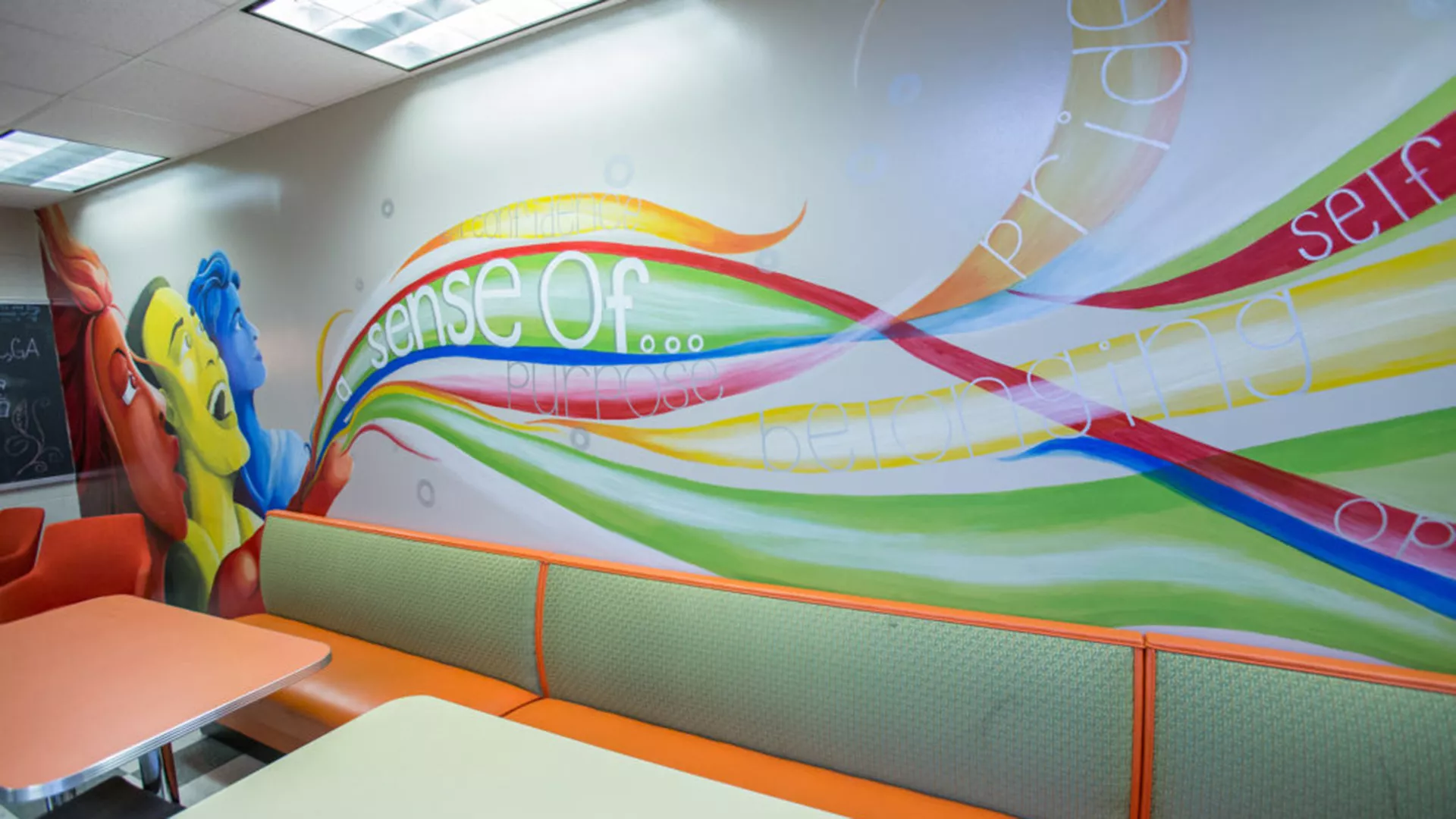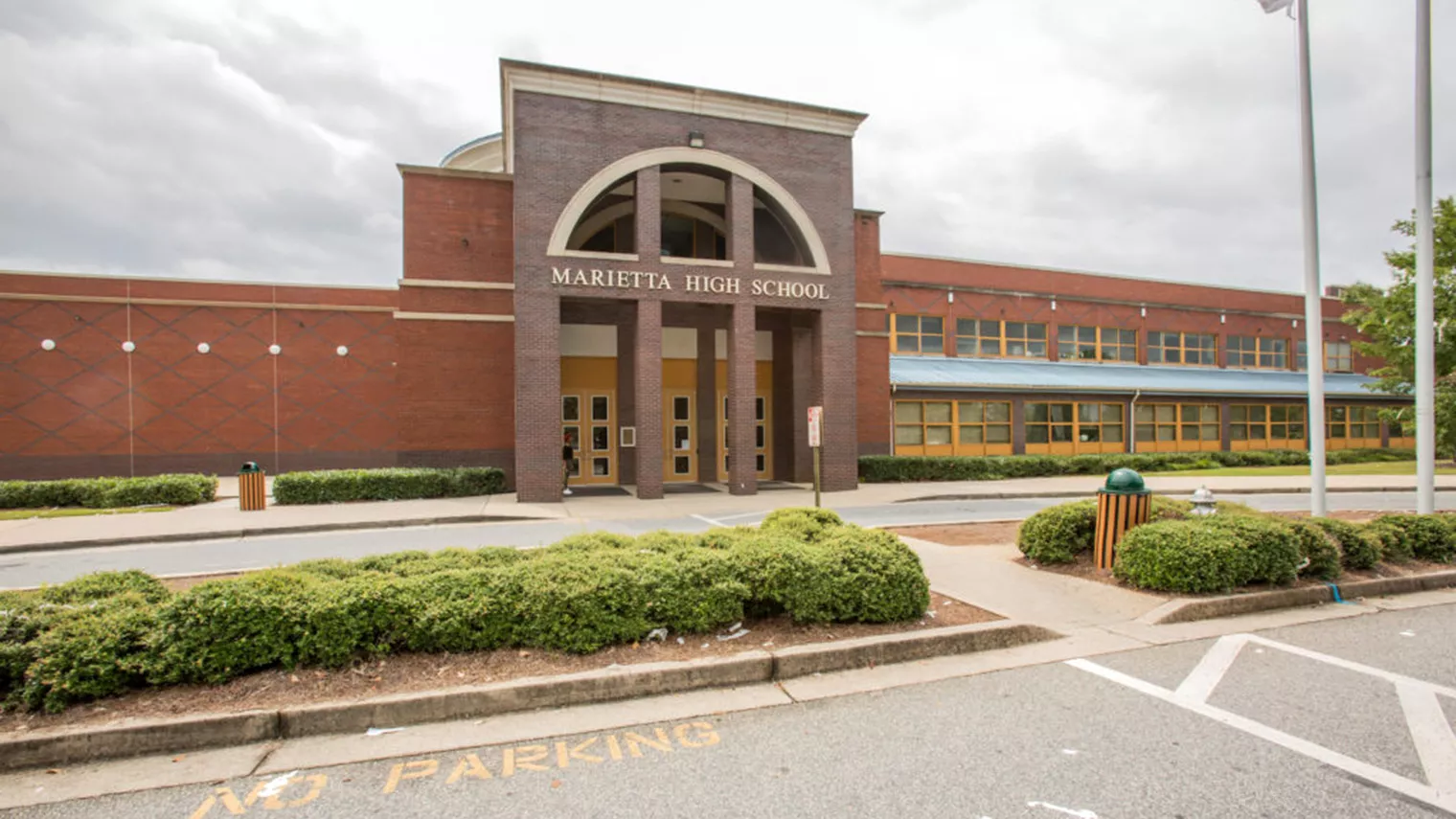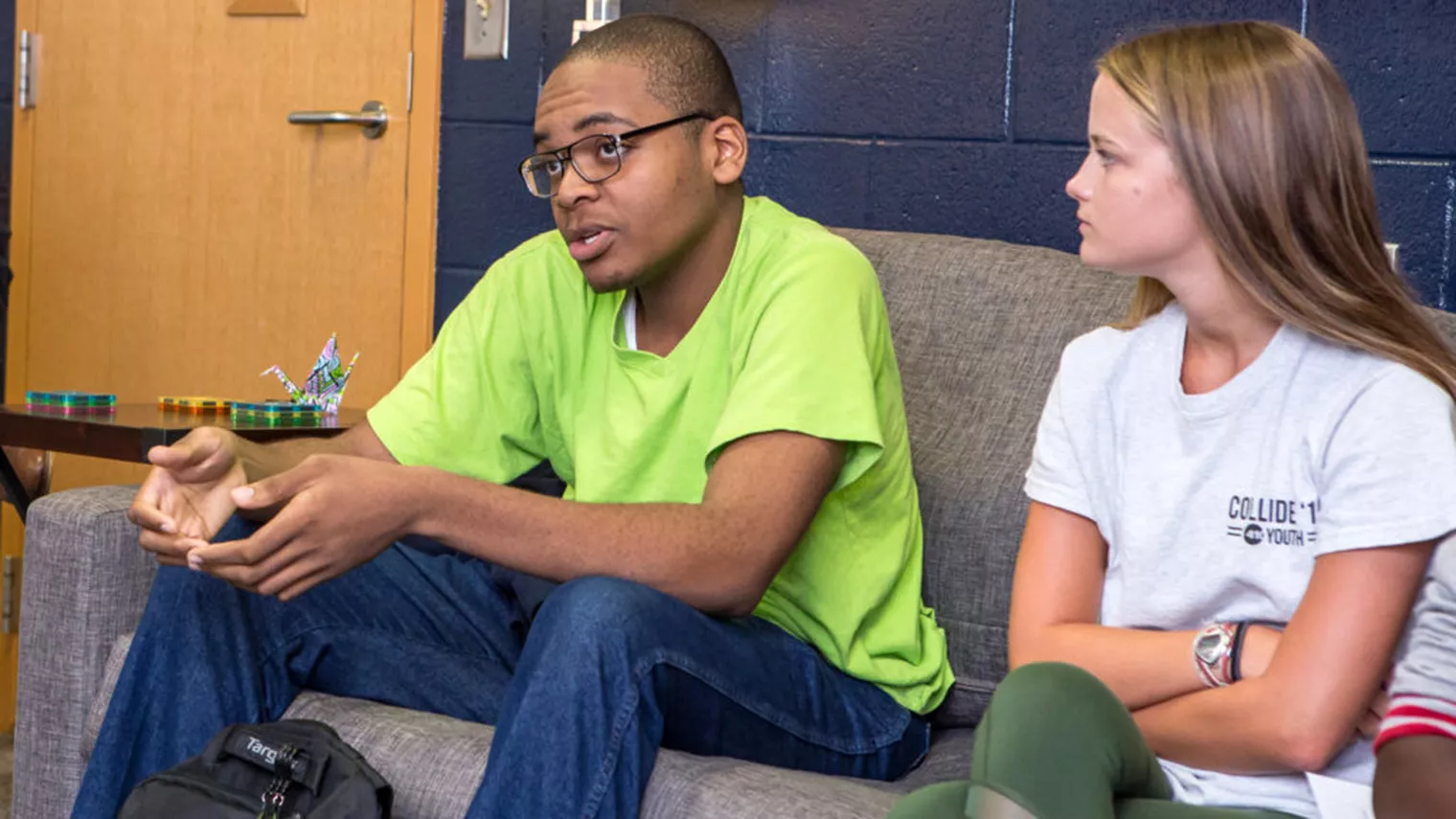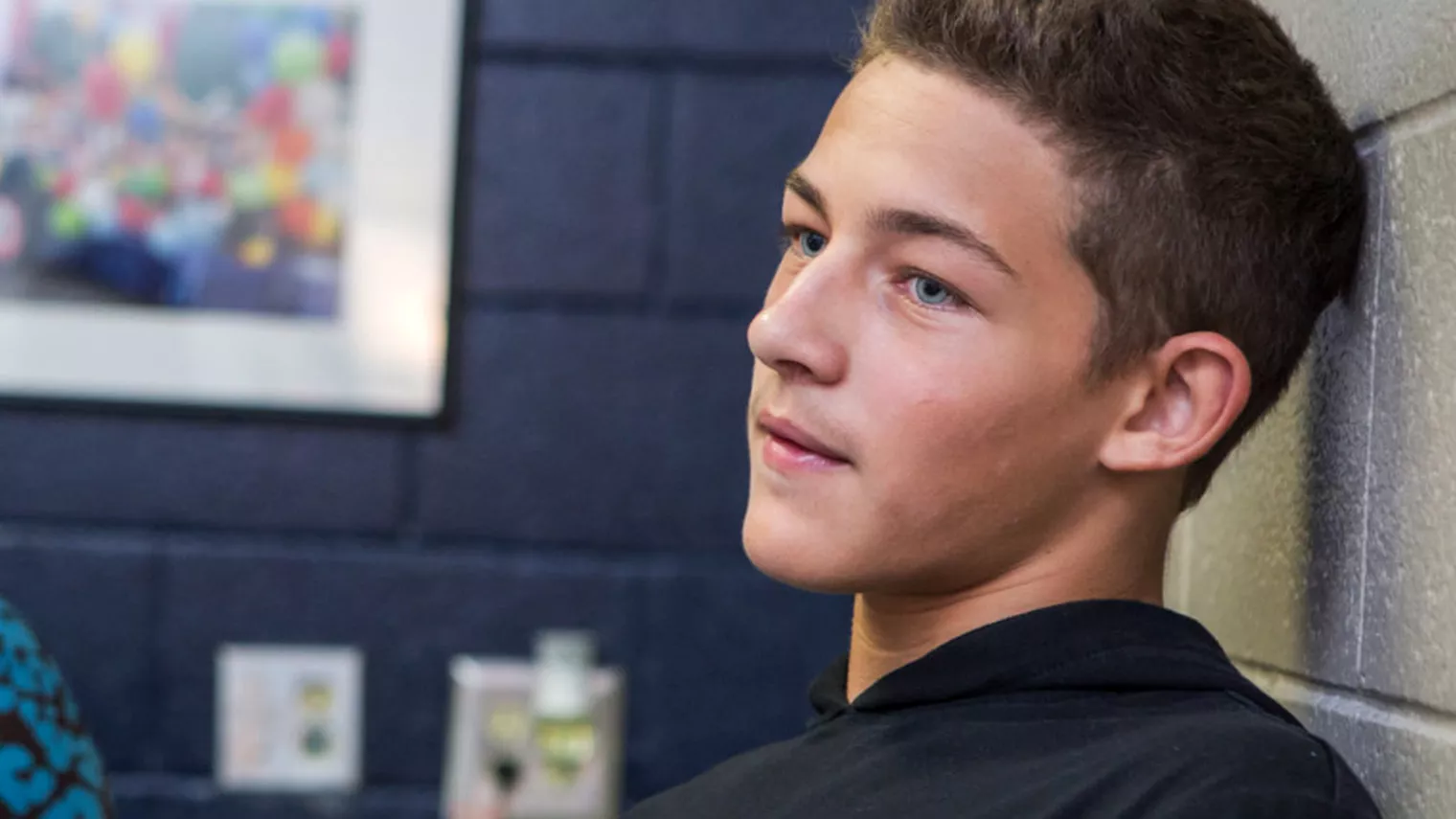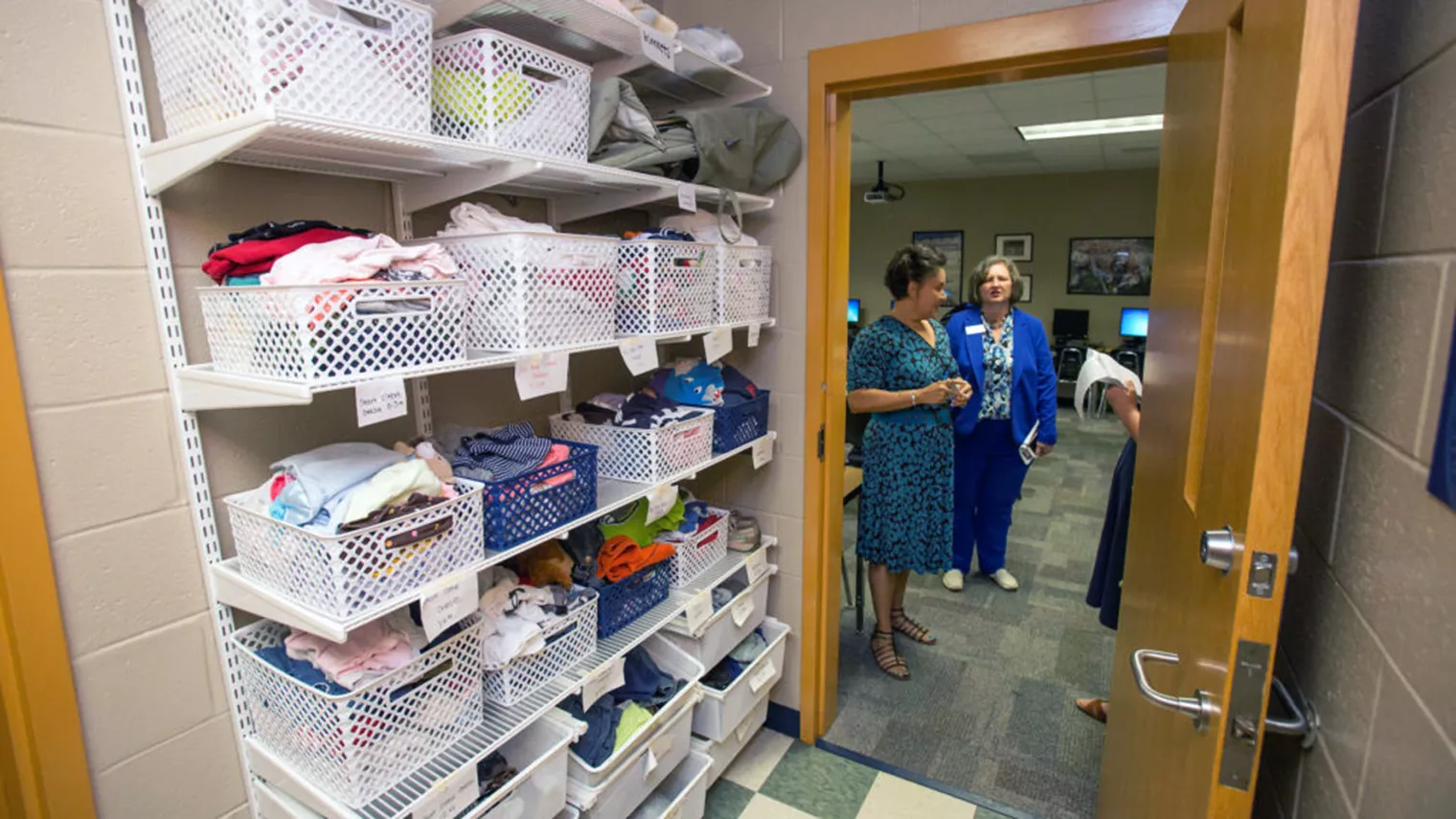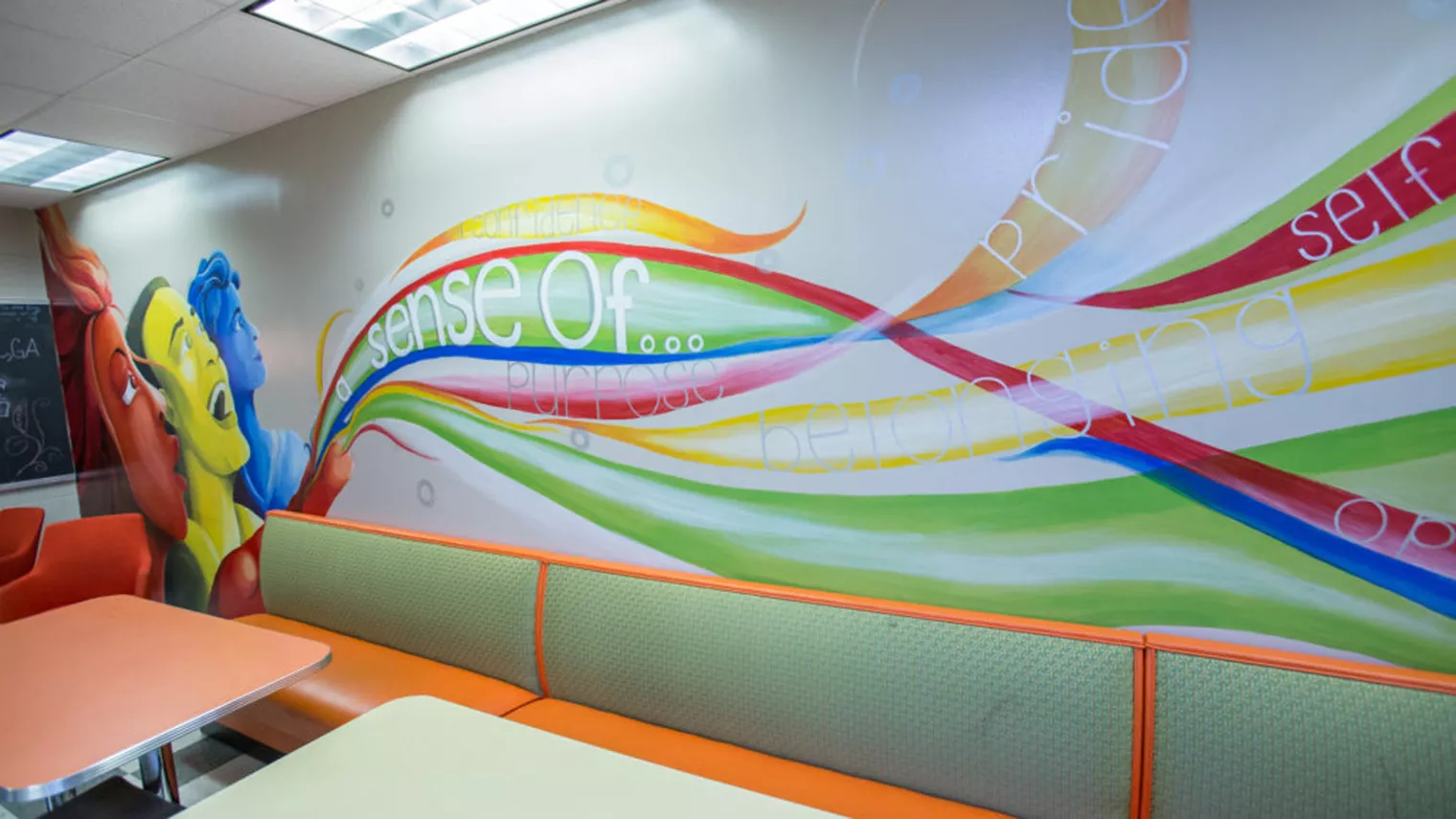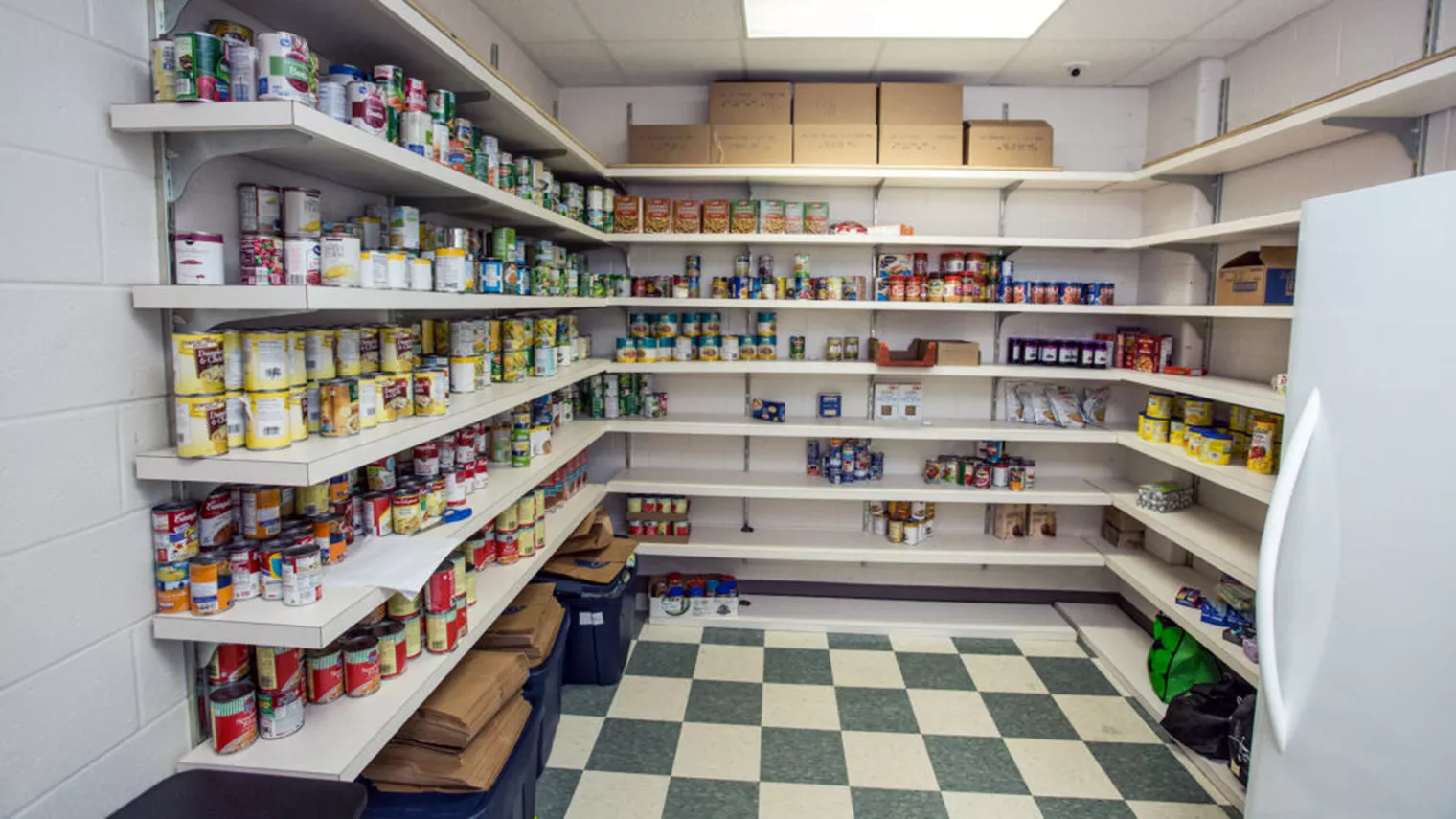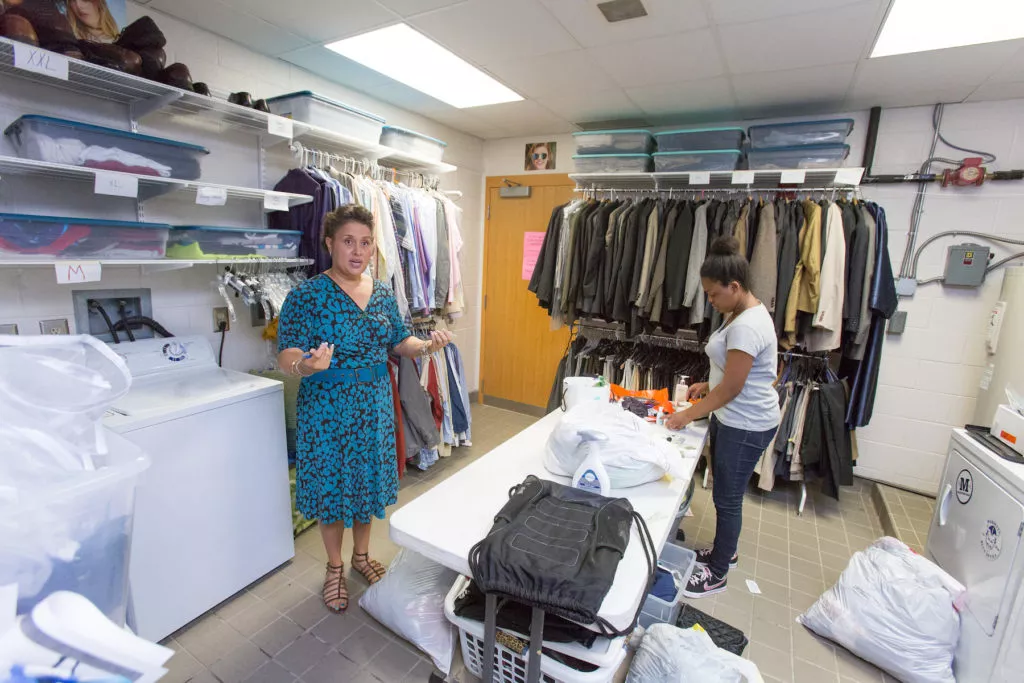One student was orphaned during the summer after freshman year, and relies on the school’s food pantry and clothes closet. Another struggles with math, and wouldn’t graduate without a lunchtime tutor. A third is a first-generation American—a brilliant student in her advanced classes, but stressed out and stretched thin.
All of them cherish the support they have found in the Graduate Marietta Student Success Center at Marietta High School in Marietta, Ga., where a network of teachers, counselors, and community partners have, since 2015, cultivated a culture of hope and achievement. Last year, more than half of the high school’s 2,500 students spent at least some time in the center—for services that range from academic tutoring, grief counseling, anger management, college advice, to substance abuse counseling.
Their parents might also have dropped by to do a load of laundry.
“Program might not be the right word for what we have here. It suggests we’re separate,” said the center’s director, Rona Roberts. More accurately, Marietta’s success center could be described as “a concept, a mindset, a changing paradigm” that sees students as more than test scores or data points on a graduation rate, but as whole people and community members with complex needs.
It is the future of public education, she hopes.
Last year, by a vote of 60 percent, Georgia voters rejected a proposal by Republican Gov. Nathan Deal that would have allowed the state to seize control of struggling public schools, fire their principals and teachers, and bring in for-profit charter school companies to run them with local tax dollars.
Their resounding “no, thank you!” was a vote of confidence in the school-improvement strategy that was championed by countless parents and Georgia Association of Educators members, and known to work in public schools across the nation. That is to invest in locally run, community schools.
What is a Community School?
“[Community] schools are first and foremost places of learning, but what sets them apart is their focus on the entire child,” explains NEA President Lily Eskelsen García in a recent blog post.
“Common sense tells us that students can’t focus inside the classroom if their basic needs aren’t met outside the classroom. That’s the premise of community schools.”
In Brooklyn Center, Minn., this means the high school has a person who helps parents find affordable housing. In Allentown, Pa., it means the local food bank packs take-home meals for students every Friday, the local symphony helps with music classes, and the region’s mobile dental clinic books appointments through the school nurse.
The services provided by community schools aren’t all the same. They differ according to a specific community’s needs. But almost all are characterized by long hours, open-door policies, partnerships with dozens of community agencies, and the realization that strong communities can help students learn.
This is proven fact: “When public schools become community hubs—offering services and programs beyond the school day, creating strong learning cultures and safe and supportive environments for students and educators—student outcomes improve,” according to Annenberg Institute for School Reform researchers.
State takeovers, on the other hand, like in Louisiana and Michigan, mostly have turned high-poverty schools into low-performing, racially segregated charter schools.
In Marietta, success looks like this: A student who has graduated from anger management counseling saying a cheery “good morning” to her mentor. Or another, sitting in a computer lab long after classes have ended and darkness fallen, enjoying the quiet space to get his homework done.
“This is home away from home,” he says.
